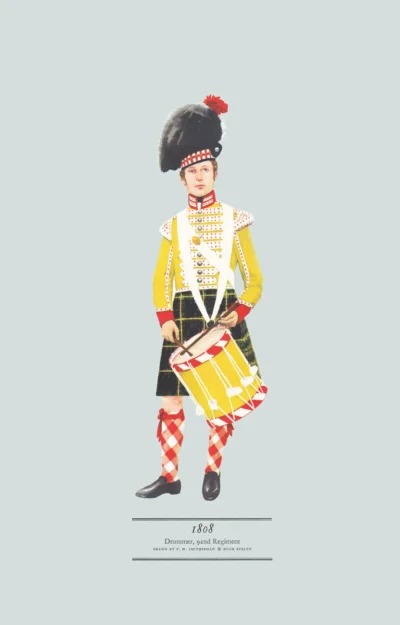(I) Admiral, Full Dress
(II) Vice Admiral, Undress
£17.50
(I) Admiral, Full Dress, 1795-1812
(II) Vice Admiral, Undress Uniform, 1795-1812
(scroll down for a more detailed Description)
Published 1965 © Hugh Evelyn Limited; drawn by John Mollo (1931-2017)
Size: c. 38 x 25 cm. [15″ x 10″] may vary slightly from printers’ cut 50 years ago
Printed on high white heavy cardstock 149 g/sm²
This is a STANDARD sized print – shipping is the same for 1 to 10 prints (based on largest print size in your order) – see Shipping & Returns
In stock
Description
I. Admiral, Full Dress, 1795-1812: Either to economise, or because of the general simplification in civilian dress, it was found necessary, two years after the outbreak of war, and seven years after they were first introduced, to alter the uniforms of 1787 for all ranks above lieutenant. For the first time the orders mention hats; in fact, of course, officers continued to wear laced or plain hats as the spirit moved them. The Admiral in the accompanying plate is wearing the ribbon of the Order of the Bath, and one of the gold medals first awarded after the Battle of the Glorious First of June 1794 to flag officers and captains who took part, and which were subsequently given out for certain other actions.
II. Vice-Admiral, Undress Uniform, 1795-1812: this plate shows Lord Nelson in the uniform he wore at Trafalgar. He seems to have turned a natural talent for dressing up to good use in the boosting of his own and others’ morale. He was wearing a Vice Admiral’s coat when hit in the left shoulder by a musket ball during the Battle of Trafalgar (from which he died some hours later). On the left side, not visible in the plate, are embroidered replicas of his four orders of chivalry: The Bath, the Sicilian Order of St Ferdinand and of Merit, the Turkish Order of the Crescent, and the Equestrian Order of St Joachim of Leiningen. In his cap is the diamond spray given by the Sultan of Turkey after his Victory at Aboukir with 13 rays representing the 13 French ships taken or destroyed. Round his neck he wears his gold medals for St Vincent and the Nile, and under his coat the ribbons of the orders listed above. He is shown with a sword in this plate, but his sword remained lying on his cabin table throughout the battle.
Additional information
| Weight | 0.0145 kg |
|---|---|
| Dimensions | 38 × 25.5 cm |





